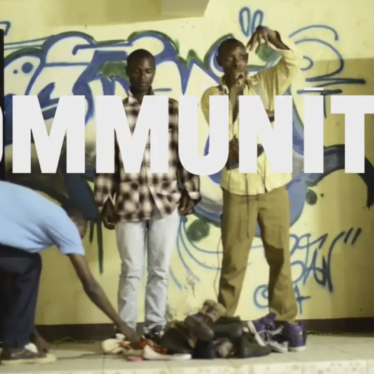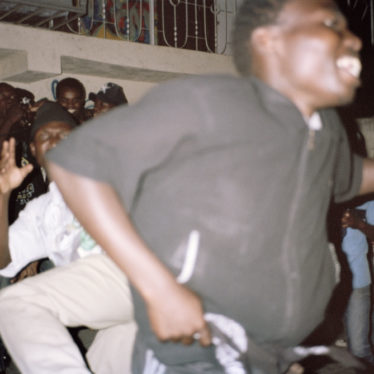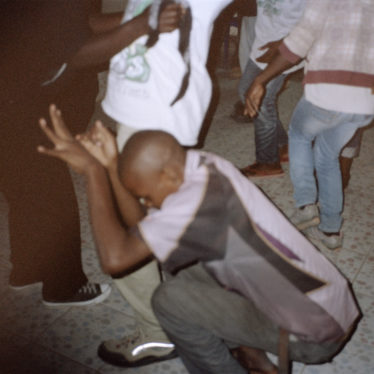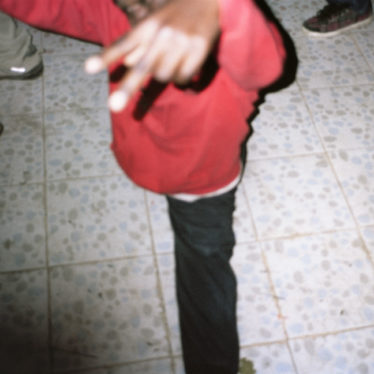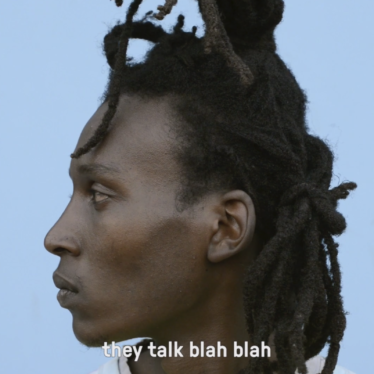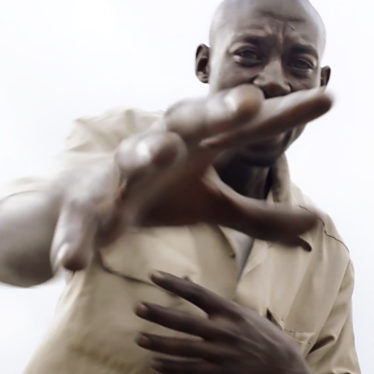On the very first day we met two Arushians, Biggie Shirima and Daz Knawledge who established a vivid, local organization called SUA (Saving Underground Artists). Their major aim is to support young MC’s in searching for and spreading their explicit positive message. Thanks to them our network within Arusha’s hip hop scene grew immediately. Apart from commercial success these rappers search for their individual, true messages. Due to colonialism the roots of the people are often hard to trace back. The street is their playground on which they improvise. This practice, shown especially during the almost ritual open-mics, creates an intense energy between the performers and the crowd. At this point it isn’t about music anymore, it becomes something else, kind of a dilirious state of mind. During our stay, we produced photographic series and started to build a photographic collection. Along that we filmed interviews for SUA, in which the artist could state their messages, and shot music-videos with local Rappers.
Nora Longatti und Dominik Zietlow: Spread The Message (STM) / Communitas, 2015 / Format: Fotografie, Bewegtbild, Text
Open Mic 1: Clip, uncut (28′)
Open Mic 2: 4 photagraphs (Communitas)
Toxic Man – Kiu Ya Haki: Clip (5′)
Menace – Manase: Clip (4′)
SPREAD THE MESSAGE – featured by Alwin Abegg, april 2015
Open Mic, 22.02.2015 – Sombetini neigbourhood, Arusha, Tanzania.
He has lined up on the stage with the other MCs indicating that they want to go next, subtly urging the guy holding the mic, rapping, to hand it over to him. He is slightly moving to the words, eyes to the ground. Now, finally, his fellow hands the mic over to him.
He takes the mic slowly and gently, as if he wouldn’t have been waiting before, wraps the cable around his fist and holds the mic like a weapon. It is now a part of his body. He is now the Master of Ceremony.
The Master of Ceremony mumbles his first few words and then starts to rap, KiSwahili and English. The crowd gathered around him is not only in front of him but on his left, on his right, behind him, arms are in the air, he, the microphone, is the center of all the young men now moving to his words.
As the mic wanders and wanders through hands and hands the movements gets more intense, some kick, some jump, hands go up and down, drums bang, legs kick, arms fly, words fly, bodies stand still, bodies jump, bodies push up, jump and turn.
Being the self-designated capital of Hip Hop in Tanzania, Arusha is the home of a Hip Hop scene which is, though not as dominant as it was back in the 1990s where Hip Hop was celebrated as muziki wa kazazi kipya (music of the new generation) and seemed to express the state of mind of a whole generation in post-Socialist Tanzania, still very much alive.
Above all, it is strongly committed to the idea of real Hip Hop which aspires to transport a message and is as such commonly opposed to the very popular Tanzanian music genre of Bongo Fleva which is as economically successful as it is empty in the eyes of most Arushan Hip Hop advocators. Hip Hop culture in Arusha is most impressive when manifest in events of collective gathering such as the open mic session I have described above. In the course of such events, young Arushans engaging with Hip Hop in some or the other way come together and merge into a collective. Hip Hop in Arusha is about being there and it is about being there together. In his analysis of transitional rituals of Ndembu society in the 1950s in todays Zambia, the anthropologist Victor Turner has introduced the term communitas to describe an anti-structural moment which is “in and out of time”, a moment where social structures such as status and relations are dissolved and individuals merge into a collective state of being there together characterized by egality and comradeship. The American anthropologist Bryan Rill has used Turners notion of communitas to describe raves, all night dance parties where youth gather to express themselves and enjoy freedom from social structure in a moment which is “in and out of time”. Rill has pointed to the important role of idealism present in such events as a force which binds the community together, an idealism which in the case of the ravers is made up of the values of unity and respect of difference. He has also laid special emphasis on the bodily and sensorial dimension of being part of a rave which by far extends the act of merely listening to music: Moved by the music and thrilled by the sensation of being part of a collective made up moving bodies, the selves of the participants dissolve into one collective mind. And this is what I mean when saying that Hip Hop in Arusha is about being there and being there together. Or, as an Arushan friend of mine has put it: “You cannot listen to Hip Hip on tape; you have to be there”. Pointing to the fundamental difference of the experience of listening to music on your stereo in the confines of your room and of actually being there and experiencing the energy of it when it is happening, he makes the point that for him, the latter is the actual essence of Hip Hop. And, of course, one has to understand that this element of the immediate experience is not a matter of the individual level but that it is only through the collective dimension that the energy so central to such events unfolds. So, being there and being there together means to listen, to move, to move together, to react and respond to the MC, to go on stage, get the microphone and become a part of the line of rappers yourself, to go back to move, move together and dissolve in the collective body. I think that is important to note that this collective body cannot really be divided into performer and spectator but that every participant, whether he holds the microphone or not, is a performer and as such part of the collective which is unified in a moment of communitas. Somehow, this also links up to Rills argument about the importance of idealism in the rave. I believe that those instances of collectivity can be also be read as some sort of momentary manifestations or performances of the value of collectivity or community – very present themes in Arushan Hip Hop culture – as instantaneous crystallizations where a permanently shared value becomes tangible as it is visibly performed in collective action.
This brings us to another point. While Turner has mainly used the idea of communitas in his analysis of Ndembu ritual processes, he has also argued that the notion of communitas might be used to understand the Hippie movement as a prominent example of the time he wrote his book. For him, the Hippies have opted out of the social order and chosen to live in a structureless communitas-like collective which is marginal in and somehow opposed to the more structured and normative society. This fits quite well with the case of Hip Hoppers in Arusha. “The Hip Hopper” has a rather ambiguous if not negatively connotated status in contemporary Tanzanian society. Just as the figure of “the Rasta”, he is supposed to involve in activities which include alcohol, marijuana and certain forms of contact with women – activities which are all rather negatively valued by a majority of Tanzanians. This bad image is present in designations such as the term Wahuni (thugs), which in turn is often taken up by some of those who it refers to as a form of proud self-designation as thugs or in concepts such as thug life. Correspondingly, one of the most celebrated Arushan Rap groups carries the name Watengwa (outlaws), a programmatic name which is very much present on T-Shirts worn by youth in the streets of Arusha. However, that rather negative image is increasingly tackled by young Arushan Hip Hop adherents who try to redefine Hip Hop as a means of empowerment for youth in Arusha, East Africa and around the world.
Victor Turner: The Ritual Process, 1969.
Bryan Rill: Rave, Communitas, and Embodied Idealism, 2006.
